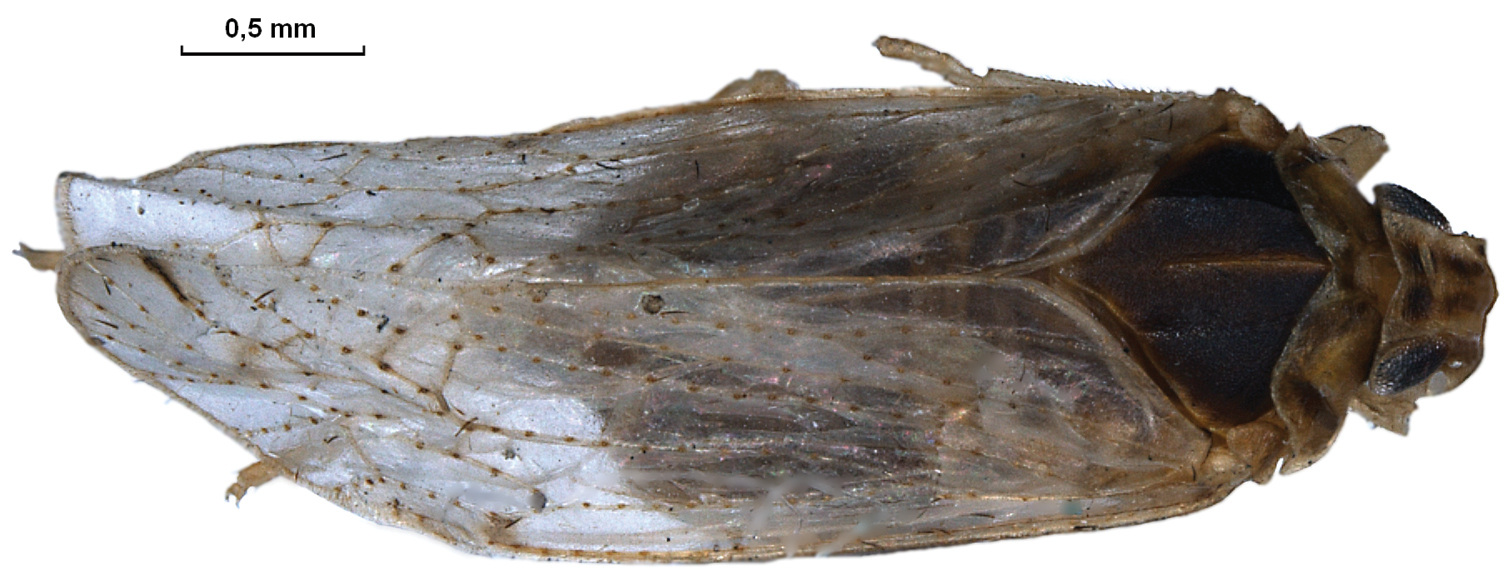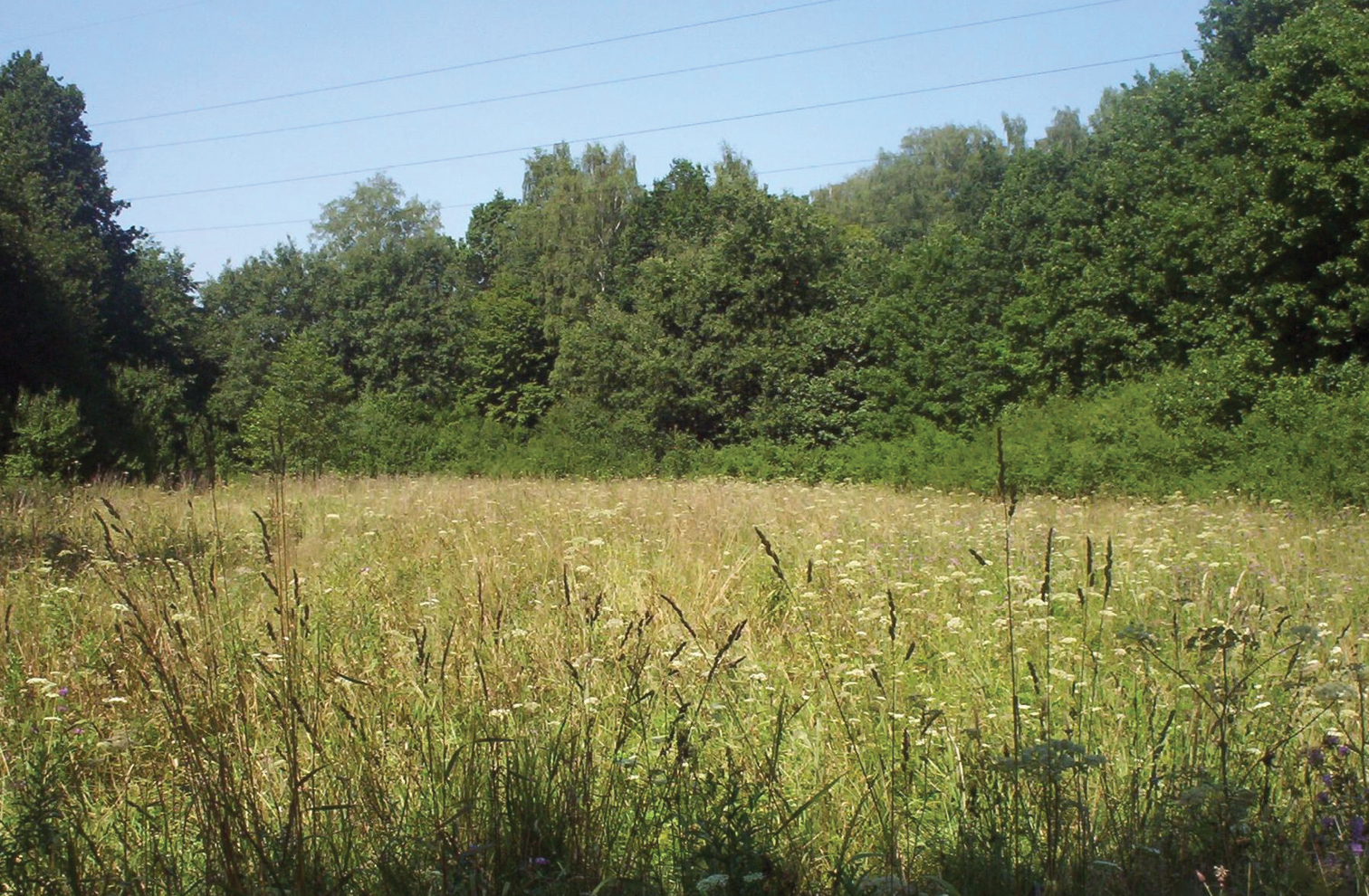






(C) 2013 Krzysztof Musik. This is an open access article distributed under the terms of the Creative Commons Attribution License 3.0 (CC-BY), which permits unrestricted use, distribution, and reproduction in any medium, provided the original author and source are credited.
For reference, use of the paginated PDF or printed version of this article is recommended.
Citation: Musik K, Walczak M, Depa Ł, Junkiert Ł, Jedynowicz A (2013) Trigonocranus emmeae Fieber, 1876 (Hemiptera, Fulgoromorpha, Cixiidae) – a new species for Poland. In: Popov A, Grozeva S, Simov N, Tasheva E (Eds) Advances in Hemipterology. ZooKeys 319: 249–253. doi: 10.3897/zookeys.319.4278
Single macropterous female of Trigonocranus emmeae Fieber, 1876 has been found during the faunistic studies in semi-natural plant communities of Oświęcim city in southern Poland. It is the first record of this species in Poland. Trigonocranus emmeae is rarely collected within the wide range of its distribution, mostly due to its hidden life mode.
Faunistics, new records, Trigonocranus, Cixiidae, Fulgoromorpha
The Fulgoromorpha and Cicadomorpha are represented in Europe by 2053 species (
During the recent studies in Brzezinka, a suburban district of Oświecim city (southern Poland) a single female of Trigonocranus emmeae Fieber, 1876 has been collected. It is the first record of this poorly studied representative of Cixiidae in Poland.
Faunistic studies on planthoppers and leafhoppers (Cicadomorpha and Fulgoromorpha) were conducted during the vegetation season of 2008. The area of the research was a suburban district of Oświęcim city – Brzezinka (UTM:CA64) (50°2'51"N, 19°9'38"E).
Insects were collected by a standard sweeping net (Ø 35cm) from the end of April till the end of October, altogether 15 samples per plot were taken. The collected material was transferred to a container with ethyl acetate. In the laboratory the collected insects were mounted on glue boards and determined. The key used to identify the species was
Chorological and ecological data used in this work are accordant to
Collected material is deposited in the Collection of Department of Zoology, University of Silesia, Katowice.
Trigonocranus emmeae Fieber, 1876 – new species for Polish fauna (Fig. 1).
Trigonocranus emmeae macropterous female (photo by A. Stroiński).
A single specimen of this species was collected on 22.06.2008 in Oświęcim-Brzezinka (southern Poland), [UTM CA64], 50°2'51"N, 19°9'38"E, in the meadow belonging to the Molinio-Arrhenatheretea class, macropterous ♀, leg. A. Jedynowicz, det. M. Walczak, C. Gębicki rev. (specimen deposited in the collection of Department of Zoology, University of Silesia).
The first locality of Trigonocranus emmeae in Poland was located in Oświęcim-Brzezinka, Leśna street (Fig. 2). It was a Molinio-Arrhenatheretea class meadow surrounded by forest. The dominant plant species were: Holcus mollis, Dactylis glomerata, Alopecurus pratensis and Agrostis capillaris, in less percentage: Anthoxanthum odoratum, Elymus repens, Carex hirta, Carex acutiformis and Carex vulpia. During the studies in 2008 apart from Trigonocranus emmeae there were 36 other species recorded in this plot. The dominant species were: Cicadella viridis (Linnaeus, 1758) (23.57% of collected material), Cicadula quadrinotata (Fabricius, 1794) (8.02%), Arthaldeus pascuellus (Fallén, 1826) (5.02%) and Stenocranus major (Kirschbaum, 1868) (3.31%) (
Habitat of Trigonocranus emmeae, Oświęcim-Brzezinka (photo by A. Jedynowicz).
According to the literature Trigonocranus emmeae is widely distributed in Europe, but very rarely collected. This species was recorded in Austria, Switzerland, France, Great Britain (
According to
The difficulties in collecting Trigonocranus emmeae result in lack of detailed biological and ecological data. This species is probably not as rare as it seems, however the right collection method must be applied to reveal its cryptic presence. Distribution of this species in Poland needs further research.
We are grateful to Adam Stroiński for the photograph of the specimen. We are also grateful to the anonymous reviewers for their efforts in improving the manuscript.

